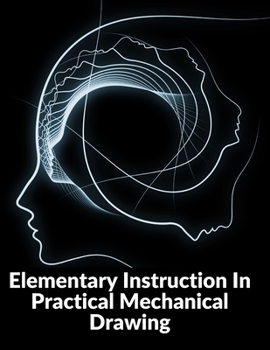Elementary Instruction In Practical Mechanical Drawing: Preparation Of Drawing Instruments With Examples In Simple Geometry And Element
The object of this book is to enable the beginner to learn to make simple mechanical drawings without the aid of an instructor, and to create an interest in the subject by giving examples such as the machinist meets with in his every-day workshop practice.
The plan of representing in many examples the pencil lines, and numbering the order in which they are marked, the author believes to possess great advantages for the learner, since it is the producing of the pencil lines that really proves the study, the inking in being merely a curtailed repetition of the pencilling.
Similarly when the drawing of a piece, such, for example, as a fully developed screw thread, is shown fully developed from end to end, even though the pencil lines were all shown, yet the process of construction will be less clear than if the process of development be shown gradually along the drawing.
Thus beginning at an end of the example the first pencil lines only may be shown, and as the pencilling progresses to the right-hand, the development may progress so that at the other or left-hand end, the finished inked in and shaded thread may be shown, and between these two ends will be found a part showing each stage of development of the thread, all the lines being numbered in the order in which they were marked.
This prevents a confusion of lines, and makes it more easy to follow or to copy the drawing.
* Mechanical drawing self-taught: comprising instructions in the selection and preparation of drawing instruments.
* Elementary instruction in practical mechanical drawing.
* Together with examples in simple geometry and elementary mechanism, including screw threads, gear wheels, mechanical motions, engines and boilers




















